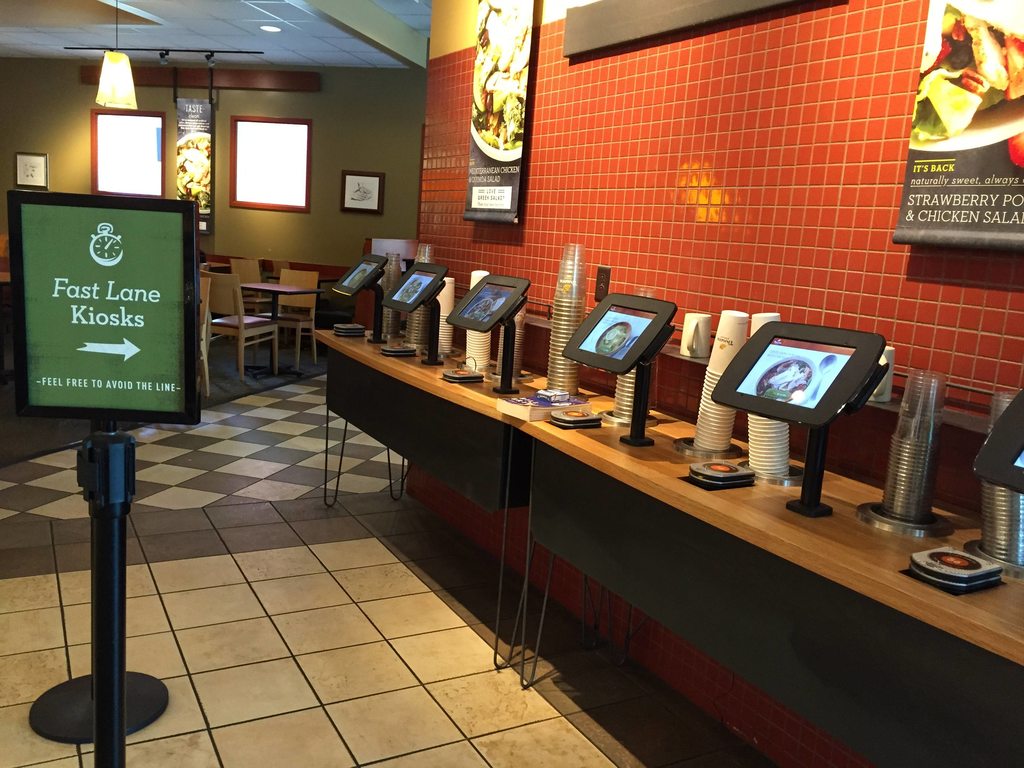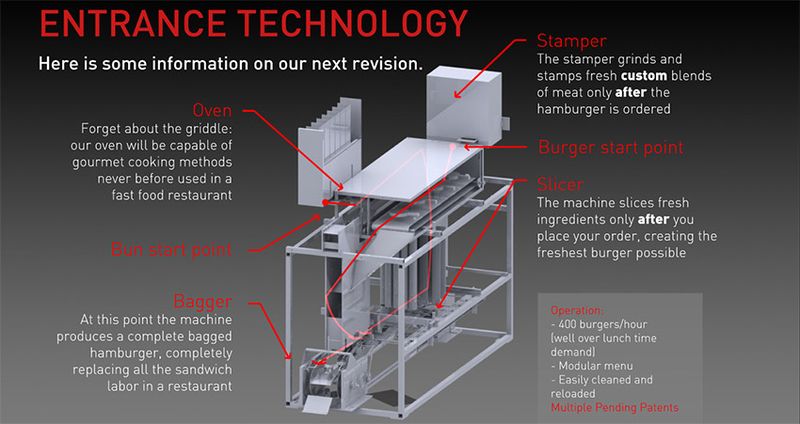Robots instead of staff in fast food restaurants - a myth or reality?

During his election campaign, Donald Trump promised that he would increase the number of jobs if he became president of the United States. However, the candidate for the post of US Secretary of Labor, general manager of the fast-food chain Carl's Jr. Andy Pazder got carried away with the idea of replacing catering workers with robots. Earlier, Pazder expressed in the media the idea that robots, unlike people, "are always polite, never take time off, are not late, will not be injured in the workplace, or be discriminated by sex, age or skin color." The truth is that Pazder’s statements are not fantasy dreams and some immediate future, but reality.
Sushi restaurants have been using robots to wrap rice in nori seaweed sheets for several decades. Without their help, the process of making rolls and sushi is very monotonous and time consuming. Suzumo claims that it was she who developed the world's first sushi robot in 1981. She also owns a machine that makes 3,600 rice cubes for sushi per hour.
')
Another Suzumo machine can make 300 medium-sized rolls in one hour. The machine takes the rice from the bowl and crushes it into a flat sheet; the algae, fish and vegetables are laid on top. Then when you press the button, the platform is activated, which looks like a conveyor belt. When the resulting plates are put on it, the rotating rollers roll the rolls. All that the staff needs to do is push the button and cut the finished rolls into pieces.
In Mountain View, Calif., Startup Zume is trying to create more profitable pizza using robotics. Two robots, Martha and Bruno, work in the kitchen of Zume Pizza. The developers created Martha so that she did not distribute the sauce perfectly well over the surface. Therefore, their pizza still looks like a product made by human hands. The coated dough moves along a conveyor belt, where the staff adds cheese and stuffing, and the Bruno machine sends the raw pizza to the preheated oven.
The creators of Zume Pizza plan to launch pizza production in patented vans. Each of them has 56 ovens that can be controlled remotely. As long as the robots load the ingredients into the appropriate ovens, the truck will circle around the place of delivery. After 3 minutes, everything is ready, and the customer receives a freshly cooked pizza delivered to your home.
In a Shanghai restaurant in the Hongkou region, there are robots that make ramen noodles in less than two minutes. The two mechanical chefs, Koya and Kona, are not yet sufficiently developed to actually produce noodles themselves, but they are fully capable of mixing the right amount of noodles, eggs and beef with the right amount of broth.
On some Royal Caribbean cruise liners behind the bar, there are not people, but cars. In Bionic Bar, two robots mix, shake and filter all kinds of cocktails. Their combinations are almost endless - the machines work with 30 types of alcohol and 28 soft drinks.

Closest to the heart of the American fast-food cuisine was Momentum Machines. The concept of a restaurant with a robot that produces 400 burgers per hour, has received a license to build in San Francisco.

For lovers of quinoa dishes, there is Eatsa , an automated restaurant that functions like a vending machine. Visitors do not interact with the staff directly, but order food using an iPad. After this, food prepared by the staff appears in one of the glass boxes, on which the visitor's name is displayed.

Delivery also took the path of automation. From this month, the ground starship robot began to deliver food in London, and the company plans to launch in the near future in Silicon Valley. Starship uses cameras, sensors and GPS trackers to pave the best route to the customer on the sidewalks. If we talk about the safety of the goods, then the assurances of the creators, it is reliably protected from thieves in a locked compartment. When the machine arrives at the destination, the client receives a code with which you can unlock the robot. In addition to food, the robot can be used to deliver mail and any other things.
Marble and Dispatch received 2 million start-up capital earlier this year to develop Carry, another food delivery vehicle. Carry has four compartments in which you can place up to 45 kilograms of food. The robot moves along the sidewalks and bike lanes at the same pace with pedestrians and delivers several orders in one trip. To move along the safest path and not disturb people, Carry uses a set of sensors and artificial intelligence methods.
Carry is hard enough: to lift it, you need the power of two people, which complicates attempts to steal a machine gun. In addition, the machine is connected to 4G, and controllers track its exact location. Follow the machine can themselves customers. When the robot arrives at the site, the client receives a notification and a code that will open the box.
Despite all these technical advances, robots will not replace fast food workers overnight. A more likely scenario would be to gradually replace people with cars. First, they will streamline customer self-service, then automate the process of collecting the order. Experts predict that delivery using ground-based robots may spread over several years before they are replaced by drones. Then the robots that will cook the food will no longer seem something distant and unreal.
Source: https://habr.com/ru/post/399883/
All Articles